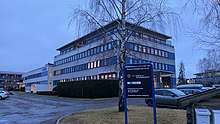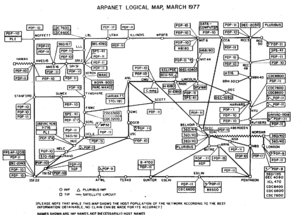NORSAR
NORSAR or Norwegian Seismic Array was established in 1968 as part of the Norwegian-US agreement for the detection of earthquakes and nuclear explosions.[1][2][3]

Description
Located at Kjeller, north of Oslo, NORSAR runs and maintains seismic arrays in Norway and it is the designated Norwegian National Data Centre for the Comprehensive Nuclear Test Ban Treaty.[4] NORSAR conducts basic seismological research, develops software and provides consultancy for the petroleum industry.[5]

NORSAR was the first non-US site included in ARPANET in June 1973 with a connection via the Tanum Earth Station in Sweden to the Seismic Data Analysis Center (SDAC) in Virginia, United States.[6][7] It was the connection point for ARPANET to spread to Peter Kirstein's research group at University College London (UCL) the following month in July 1973. Connecting through NROSAR, the Norwegian Defence Research Establishment, along with UCL and RSRE in Britain, were involved in testing TCP/IP. UCL provided a gateway between UK academic computer networks and the ARPANET via NORSAR.[8]
Since 1999, NORSAR has been an independent research foundation.[9]
References
- About us, www.norsar.no
- NORSAR History
- Novak, Matt (1 February 2016). "The Secret Project To Turn The Internet Into An Anti-Soviet Spy Network". gizmodo.com.au. Retrieved 21 July 2017.
- Marks, Paul (9 September 2014). "Spidery forest gadgets catch secret nuclear blasts". New Scientist.
- "R & D". Retrieved 21 July 2017.
- "NORSAR becomes the first non-US node on ARPANET, the predecessor to today's Internet". NORSAR (Norway Seismic Array Research). Archived from the original on 11 September 2017. Retrieved 14 November 2017.
- "ARPANET Maps 1969 to 1977". Retrieved 17 May 2012.
- Kirstein, P.T. (1999). "Early experiences with the Arpanet and Internet in the United Kingdom" (PDF). IEEE Annals of the History of Computing. 21 (1): 38–44. doi:10.1109/85.759368. ISSN 1934-1547.
- "About us". Retrieved 21 July 2017.